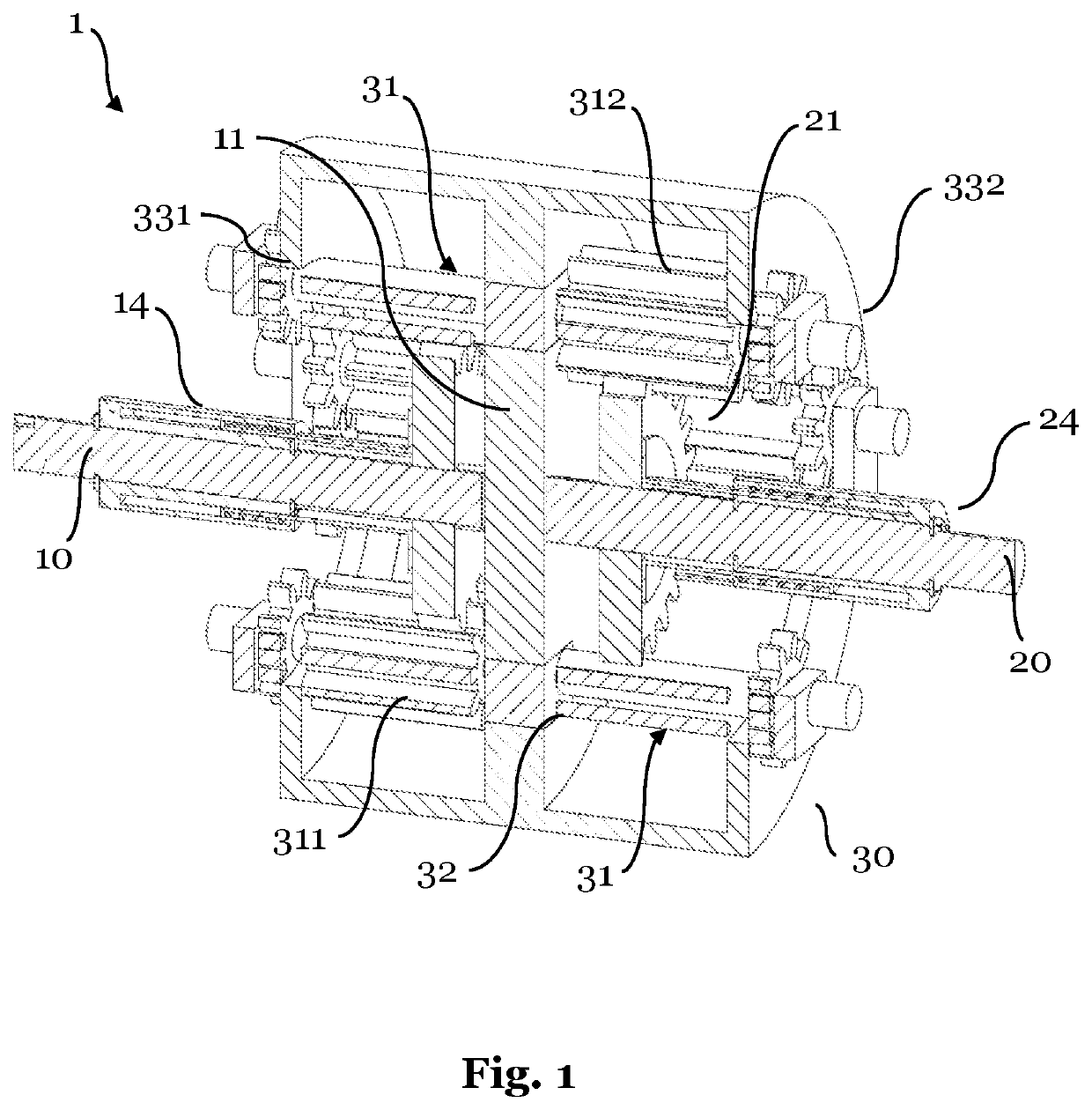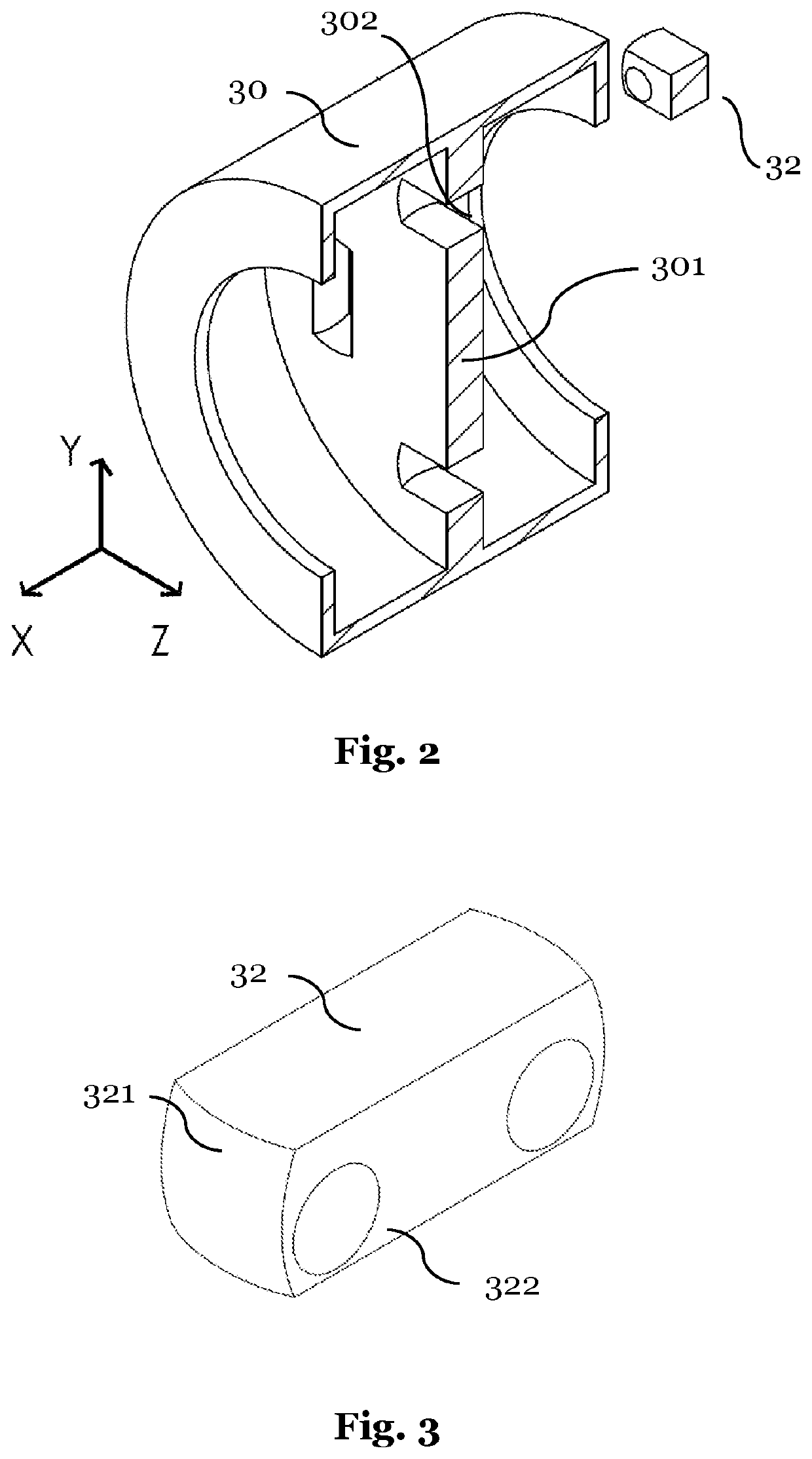Variable torque differential
a torque differential and variable technology, applied in the field ofdifferential, can solve the problems of disadvantageous equal distribution of torque to the wheels, spin of the inner wheels, and understeering phenomena or oversteering phenomena, and achieve the effects of reliable and robust manner, efficient transfer, and reliable suppor
- Summary
- Abstract
- Description
- Claims
- Application Information
AI Technical Summary
Benefits of technology
Problems solved by technology
Method used
Image
Examples
Embodiment Construction
[0033]In the following, the present invention will be described with reference to the figures. Therein, similar elements are provided with same reference numbers. It shows:
[0034]FIG. 1 a sectional view of a differential according to an embodiment of the invention;
[0035]FIG. 2 a sectional view of individual parts of a differential according to the embodiment illustrated in FIG. 1;
[0036]FIG. 3 a connection part of a differential according to the embodiment illustrated in FIG. 1;
[0037]FIG. 4 individual parts of a differential according to the embodiment illustrated in FIG. 1;
[0038]FIG. 5 individual parts of a differential according to a further embodiment of the invention;
[0039]FIG. 6 a splined rail of a differential according to the embodiment illustrated in FIG. 5;
[0040]FIG. 7 a cross-sectional view of a differential according to a further embodiment of the invention;
[0041]FIG. 8 individual parts of a differential according to the embodiment illustrated in FIG. 7;
[0042]FIG. 9 individ...
PUM
 Login to View More
Login to View More Abstract
Description
Claims
Application Information
 Login to View More
Login to View More - R&D
- Intellectual Property
- Life Sciences
- Materials
- Tech Scout
- Unparalleled Data Quality
- Higher Quality Content
- 60% Fewer Hallucinations
Browse by: Latest US Patents, China's latest patents, Technical Efficacy Thesaurus, Application Domain, Technology Topic, Popular Technical Reports.
© 2025 PatSnap. All rights reserved.Legal|Privacy policy|Modern Slavery Act Transparency Statement|Sitemap|About US| Contact US: help@patsnap.com



